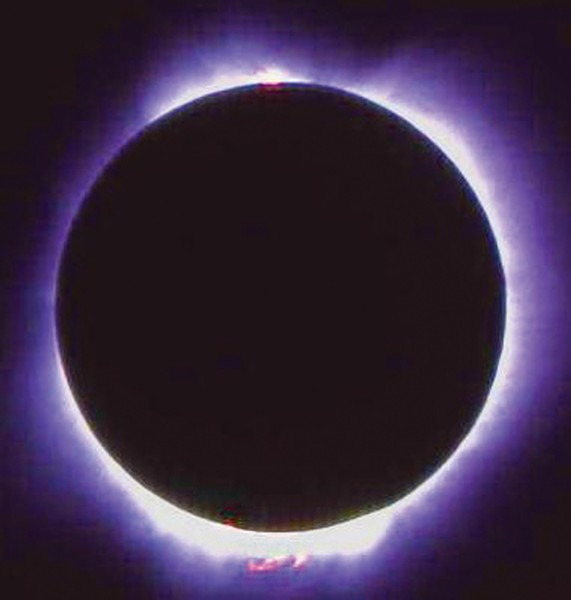Science started around dusk on May 28, 585 B.C. Don't take my word for it, that's the opinion of the late polymath/sci-fi author Isaac Asimov. On that date, the Iranian Medes and Greek Lydians, who'd been warring for six years, were fighting a battle near Turkey's Halys River when, late in the day, the sun winked out. This was interpreted as a sign that the gods were angry. According to Herodotus, "the day was suddenly turned to night ... so they ceased from fighting, and both parties were the more zealous to make peace."
Herodotus, known as the Father of History, added the kicker that the event — a total eclipse of the sun — had been predicted by the Greek philosopher Thales of Miletus, hence Asimov's "birth of science" claim. And it's all just about credible, assuming Thales had access to hundreds of years of Babylonian eclipse records ... and that he was lucky, as we'll see. Nowadays, of course, it's easy to predict where and when eclipses will occur, since computers can precisely model the dynamics of our solar system.
How did Thales do it? This was 100 years before Athenian philosophers even realized what a solar eclipse was, i.e. a perfect line-up of the sun, moon and Earth, causing the moon's shadow to be cast on Earth's surface, blocking the sun. Assuming the story is true, Thales must have realized that whatever the cause, it happened at predictable intervals. We now know that every solar eclipse is one of a family, a "saros series." Solar eclipses within a saros series occur every 223 lunations (intervals between new moons), when the sun-moon-Earth line-up recurs. Those 223 lunations are almost exactly 6,585 1/3 days — that is (ignoring leap years) 18 years 11 days 8 hours, the saros period. The one-third of a day means that successive eclipses occur a third of Earth's rotation apart — if it happens here one day, it'll happen 6,685 days later at a location eight hours' time difference from here.
So the key to Thales' prediction is that an eclipse will happen over approximately the same place on Earth every third saros period, that is 19,756 days apart. Assuming he had records showing that eclipses occurred over Anatolia about every 54.09 years, he could have pulled off his amazing — for his era — feat of prognostication. While he might well have figured out the day of the eclipse, he was lucky in pinpointing the place. Although solar eclipses are quite common, with several saros cycles proceeding simultaneously — a total solar eclipse occurs somewhere on Earth's surface every 18 months or so — they only occur over the same place once every 370 years on average. That's because the path of totality is quite narrow, typically only about 100 miles wide.
This year's solar eclipse is number 30 (of 71) of saros cycle No. 139 which started in 1501 and will end in 2601. If, on April 8, you're on a line between Mazatlan, Mexico, and Gander, Canada, passing through Dallas, Cleveland, Syracuse and Niagara Falls, the sun will be completely blocked by the moon for about four minutes. Of course, if it's cloudy, you'll be SOL. Historically, cloud cover along the centerline of this year's eclipse is pretty iffy; the farther north and east you go, the less your chance of a clear view of the eclipsed sun. Here in Humboldt, we'll get a partial eclipse — better than nothing, but, trust me, nothing to compare to totality.
Barry Evans (he/him, [email protected]) still treasures nearly seven minutes of eclipse, July, 1991, viewed from Baja California.

Comments